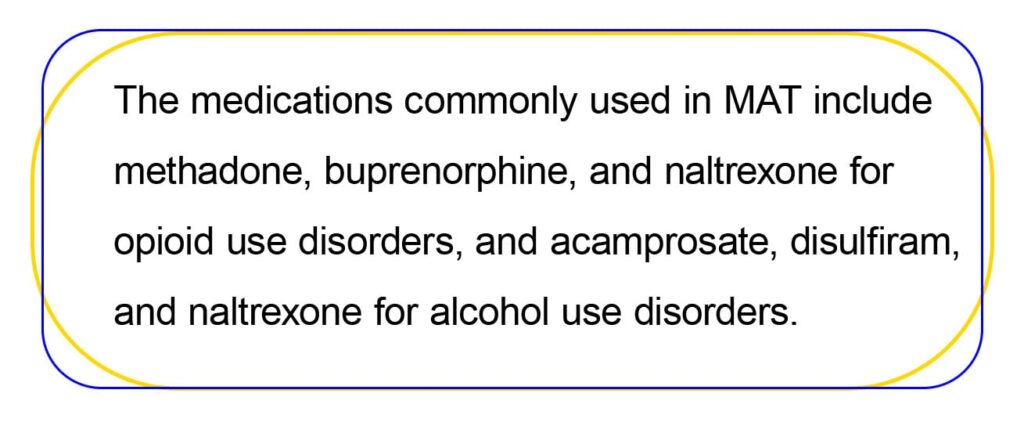The journey to recovery from substance use disorders can be a daunting one, fraught with obstacles and setbacks. However, recent advances in the field of addiction medicine have provided a beacon of hope to many. One such advance is Medication-Assisted Treatment (MAT), a comprehensive treatment approach that combines behavioral therapy with FDA-approved medications. This article delves into the benefits of MAT, highlighting the key medications used and the research supporting their efficacy.

What is Medication-Assisted Treatment?
It offers a “whole-patient” approach to the treatment of substance use disorders, particularly opioid and alcohol addiction.
Medication-Assisted Treatment (MAT) is an evidence-based approach to treating substance use disorders, particularly opioid addiction. MAT combines the use of FDA-approved medications with counseling and behavioral therapies to provide a comprehensive treatment plan. This integrated method aims to address both the physical and psychological aspects of addiction, thereby improving the chances of long-term recovery. The medications used in MAT help to normalize brain chemistry, block the euphoric effects of alcohol and opioids, relieve physiological cravings, and stabilize body functions without the negative effects of the abused substances.

Methadone and buprenorphine work by binding to the same brain receptors as opioids, which helps to reduce cravings and withdrawal symptoms without producing the high associated with opioid abuse. Naltrexone, on the other hand, works by blocking the effects of opioids at their receptor sites in the brain, which helps to prevent relapse. These medications are most effective when used as part of a holistic treatment plan that includes counseling and support services.
MAT has been shown to be effective in improving patient survival, increasing retention in treatment, decreasing illicit opiate use and other criminal activity among people with substance use disorders, and improving birth outcomes among women who have substance use disorders and are pregnant. By addressing the needs of the whole patient, MAT supports recovery and helps individuals rebuild their lives. Despite its proven effectiveness, MAT is sometimes underutilized due to stigma and misconceptions about its use. However, ongoing education and advocacy efforts are helping to increase acceptance and availability of this life-saving treatment.
Buprenorphine
Naloxone
Nalmefene
Acamprosate (Campral)
Disulfiram (Antabuse)
Efficacy
The rise of MAT represents a significant step forward in the fight against addiction. By combining the strengths of behavioral therapies with the stabilizing effects of medications, MAT offers a holistic and effective approach to addiction treatment. At Addiction Gap, we believe that embracing and promoting MAT is pivotal to closing the addiction treatment gap and providing individuals with the best chance at lasting recovery.
Study reference
Marilyn D. Skinner et al;
https://www.ncbi.nlm.nih.gov/pmc/articles/PMC3919718/
Addiction Gap is a certified 501(c)(3) nonprofit
